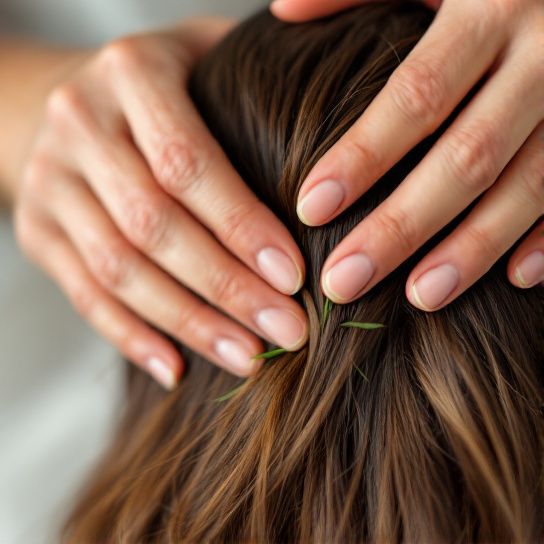
Have you ever noticed a sudden patch of hair missing when you look in the mirror? That might have given you a little shock, right? It’s not uncommon, and you’re definitely not alone. This hair loss pattern is often associated with a condition called *Alopecia Areata*. Infamous for its unpredictable nature, alopecia areata affects not just the hair’s appearance but can also sneakily chip away at one’s self-esteem.
Let’s dive into what makes this condition tick. Consider this an easy-going chat, not some stuffy textbook explanation. By the end of this piece, you’ll have a better grasp of why your hair sometimes seems to have a mind of its own, what it means for your well-being, and what you can do about it.
What is Alopecia Areata?
In simple terms, alopecia areata is a type of hair loss. It’s not just the standard shedding that everyone experiences in the shower. This is more distinct and might come as a bit of a surprise. Technically speaking, it’s an autoimmune disorder—the fancy way of saying your immune system mistakenly attacks your hair follicles as if they’re outlaws.
So, Why Does This Happen?
That’s the million-dollar question. Picture this: Your immune system is your body’s battalion designed to protect. Sometimes, however, it fires at shadows instead of real threats, and when an error like this occurs, it can cause the hair follicles to enter a dormant phase. With alopecia areata, your immune system targets these follicles, leading to hair loss in circular patches on the scalp—and occasionally elsewhere.
Symptoms of Alopecia Areata
Recognizing alopecia areata often starts with noticing an unusually smooth, round, hair-free patch on your scalp. Sometimes, it feels almost silky smooth compared to surrounding areas. While this might be the primary symptom, let’s chat a bit more about what else can come along:

A Close-up Look
- Circular Patches: These are the calling cards of alopecia areata — small, round patches, reminiscent of coin-sized bald spots.
- Sudden Hair Loss: Hair can fall out suddenly, leaving a noticeable patch over the course of a day.
- Scalp Health: Generally, the skin looks healthy, with no obvious irritation or scarring, unlike some other forms of hair loss.
- Nail Changes: Some folks spot changes in their nails, like tiny indentations or roughness. It’s subtle but telling.
The key thing is, hair often grows back in its own good time. Aloepecia areata itself doesn’t destroy your ability to grow hair permanently. Ah, the joy of knowing it’s not forever!
Emotional Rollercoaster
Let’s not gloss over how tough this can be emotionally. Suddenly noticing spots in the mirror can feel alarming, and while alopecia areata is physically benign, it often requires some emotional adjustment. Acceptance can take time. But trust me, coping and thriving with these changes is perfectly possible.
Treatment Options: What Can You Do?
Alright, now let’s tackle the big question – treatment options. First off, it’s worth remembering that while hair grows back for many people, various strategies can support the process or simply help you feel better in your skin.
Standard Medical Approaches
Here’s a rundown of some typical strategies healthcare providers might suggest:
- Topical Treatments: Applying corticosteroids onto bare patches to encourage growth is quite standard. These minimize immune responses directly over affected areas.
- Injections: Corticosteroid injections targeted specifically at hollow patches can prompt an immune system takedown. They’re quick, although not everyone’s cup of tea.
- Oral Medications: Immunosuppressants like Methotrexate or medications such as JAK inhibitors are sometimes prescribed, especially for extensive forms of alopecia. They work on a systemic level, but it’s a considerable step to take with potential side-effects.
Innovative Approaches

More recently, treatments like phototherapy and even new topical formulations are being explored with promising early results. Science is diving deep into genetics and immune pathways to unlock longer-term solutions. It’s an evolving field, so stay tuned with your dermatologist for the latest buzz.
Lifestyle and Home Remedies
For those keen on natural remedies or supplementary lifestyle tweaks, here’s a nudge toward ideas with some potential:
- Dietary Changes: Some believe an anti-inflammatory diet can greet a healthier immune system. Think omega-3-rich foods, antioxidant-laden fruits, and stress-relieving teas.
- Essential Oils: These little marvels like rosemary or lavender might not regrow hair but can nourish the scalp and support a sense of emotional wellness.
- Stress Management: Stress and alopecia share a fraught relationship. Give meditation, yoga, or regular exercise a whirl to compliment other treatments. Balancing your stress potentially regulates immune responses—over time.
What About Hair Care?

While battling alopecia areata, consider a few smart tweaks to your hair care routine:
- Gentle Products: Use mild shampoos and conditioners that avoid irritating your scalp.
- Minimal Heat Styling: Keeping away from high heat can prevent undue stress on fragile hair.
- Protective Styling: Embrace hairdos that fit your current hair length and don’t strain roots—loose buns or gentle braids can do the trick.
Understanding the Big Picture
Take a moment to pan out and consider the broader circumstance. Remember that everyone’s journey with alopecia areata will differ, bound by personal reactions, lifestyle, and environmental factors. Staying informed and keeping the communication line open with dermatologists often proves empowering.
Living with alopecia areata invites a deep dive into self-discovery both health-wise and emotionally. More than anything, tap into the vibrant community surrounding this condition—from support groups to online spaces. They offer bits of perspectives, shared experiences, and a whole heap of practical advice.
Before we wrap up, let’s come full circle. Alopecia areata may call for some adjustments, but your story doesn’t end there. Embrace this part of your life journey. Sometimes unexpected turns escalate personal insight and resilience. So, whether experimenting with that rosemary oil or deciding on a short crop, you’re right at the helm! Chat again soon.
Frequently Asked Questions
What is alopecia areata?
Alopecia areata is an autoimmune disease that causes the immune system to attack the body’s hair follicles, leading to patchy hair loss. It can affect the scalp, eyebrows, eyelashes, and other parts of the body[3][5][1).
Who can be affected by alopecia areata?
Alopecia areata can affect people of all ages, genders, and races/ethnicities. It affects males and females at similar rates, and nearly 7 million people in the United States are living with the condition[1][3][5).
What are the types of alopecia areata?
There are several types of alopecia areata, including patchy alopecia areata (round patches of hair loss on the scalp), alopecia totalis (complete hair loss on the scalp), and alopecia universalis (complete hair loss on the scalp and body)[1][3][5).
How is alopecia areata treated?
Treatment for alopecia areata can include topical therapies (creams or ointments), injectable therapies, and systemic therapies (pills) that affect the immune system. Until 2022, there were no FDA-approved prescription pills for severe alopecia areata, but new medications have been approved since then[1][3][5).
References


Leave a Reply